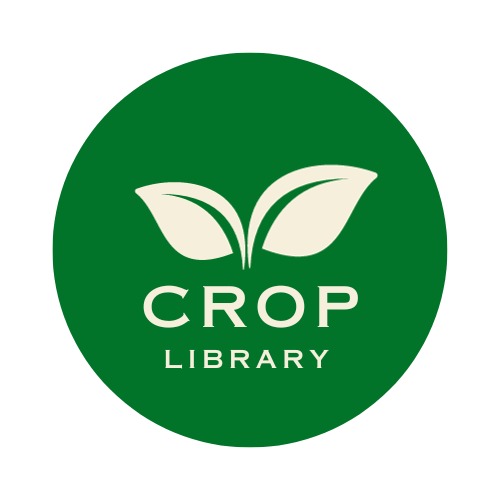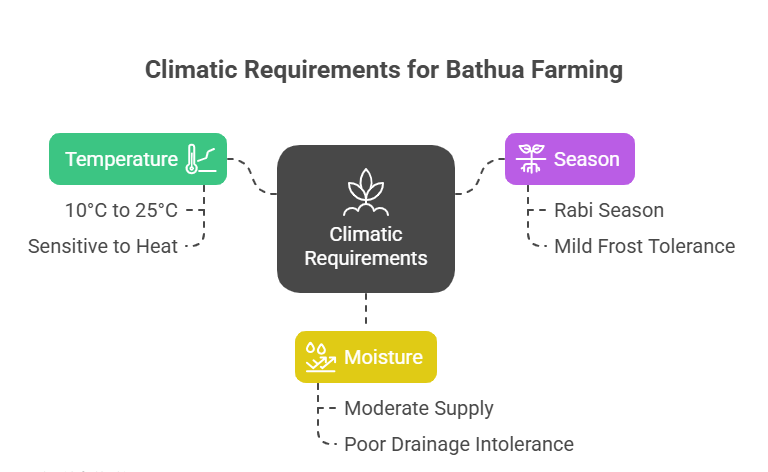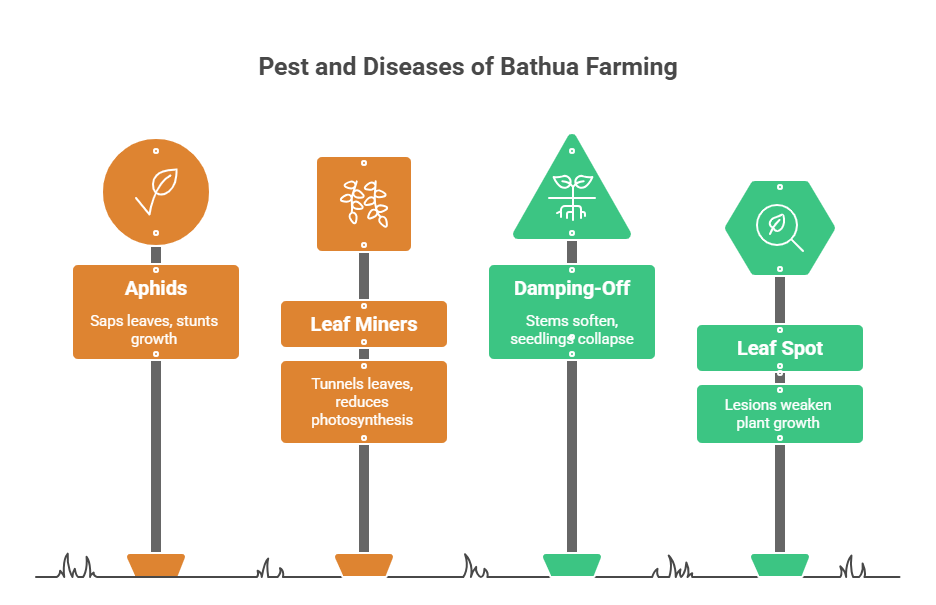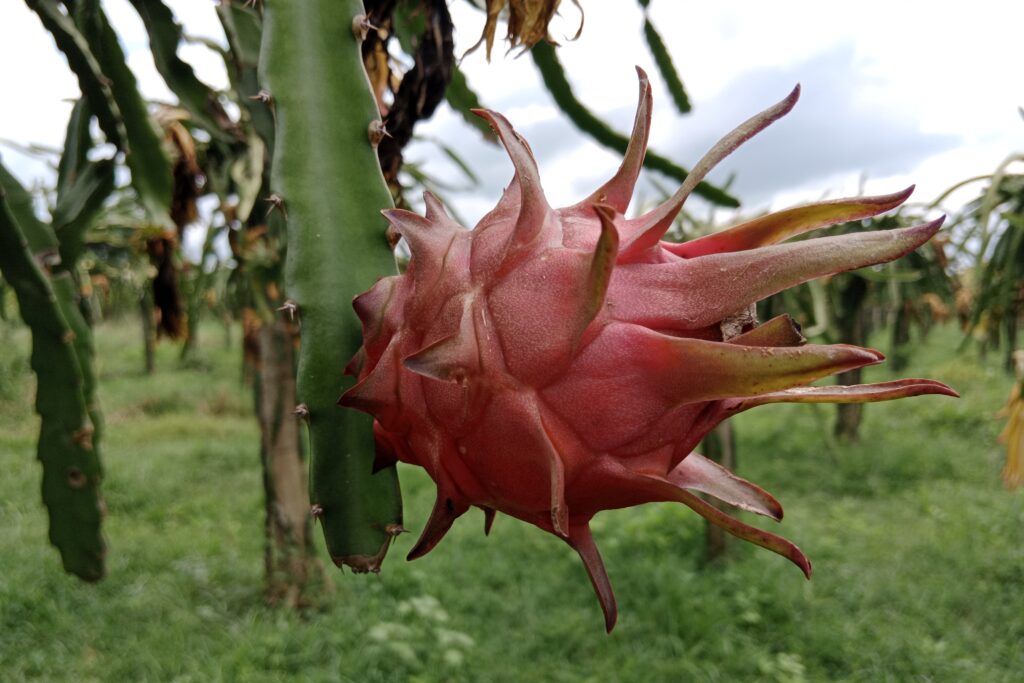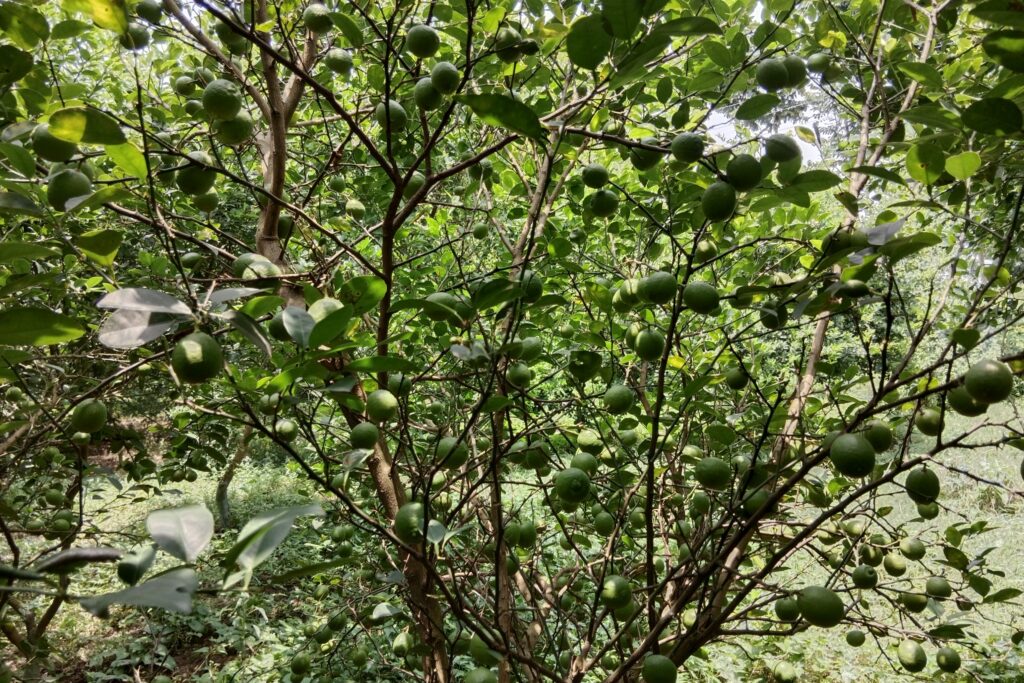Bathua Farming
Bathua (Chenopodium album), also referred to as lamb’s quarters or pigweed, is a leafy vegetable rich in nutrients and commonly eaten in South Asia. It grows well under a variety of soil types and weather conditions, which contributes to its popularity as both a traditional crop and a source of essential vitamins, minerals, and fiber. The young leaves are often added to curries, soups, and flatbreads, and because the plant requires minimal inputs, it offers a cost-effective choice for small and medium farmers.
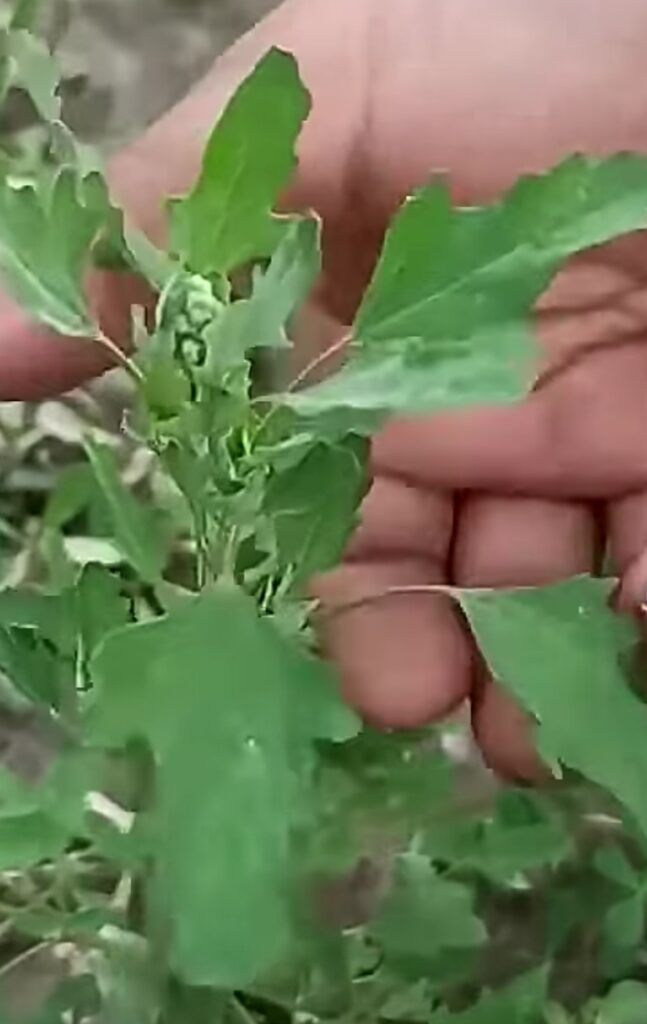
An analysis of Bathua farming profit per acre reveals impressively high returns, making it a standout venture in agricultural economics. For a farmer, an investment of NRs. 37,000 per acre can generate a total income of NRs. 140,000, resulting in a substantial net profit of NRs. 103,000.
The potential for a significant Bathua farming profit per acre is further underscored by a remarkable profit margin of around 74%, meaning nearly three-fourths of the revenue is pure profit.
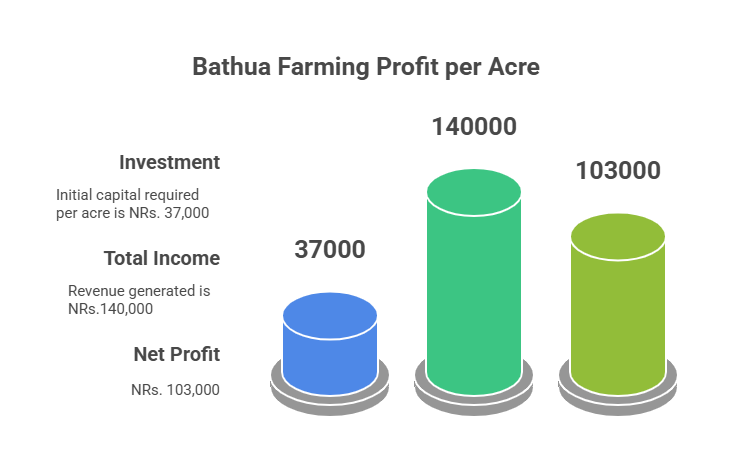
Additionally, the return on investment (ROI) stands at an exceptional 278%, indicating that the earnings are almost 2.8 times the initial capital invested, which conclusively highlights the outstanding efficiency and profitability of this cultivation on a per-acre scale.
Land Preparation
Preparing land for Bathua cultivation is not very complicated due to the crop’s hardy nature, but it should still be done systematically to ensure healthy growth. The process generally begins with deep ploughing, about 20–25 cm, using equipment such as a moldboard or tractor-driven disc plough to loosen compact soil layers.
This is followed by secondary tillage, where the field is worked 2–3 times with a harrow or rotavator to create a fine soil structure that encourages good seed germination. After this, the surface is leveled with a plank made of wood or iron, which helps in uniform distribution of irrigation water and minimizes waterlogging problems.
While Bathua can be sown directly on flat beds, raised beds are preferable in regions with heavy rainfall since they improve drainage and reduce excess moisture stress on the crop.
Soil Type
Bathua is a flexible crop that does not have strict soil requirements, allowing it to thrive in different types of soils. Even though it can grow in a variety of conditions, the crop achieves its best growth and yield in loamy soils with good drainage and high organic content.
It can also be cultivated successfully in sandy loam and clay loam soils, and it shows a fair level of tolerance to mild soil salinity, making it suitable for different regions. Ideally, the soil should have a pH between 6.0 and 7.5, which corresponds to slightly acidic to neutral conditions.
Climatic Requirements
Bathua is a winter crop that grows most successfully during the Rabi season, with ideal temperatures ranging from 10°C to 25°C. Although it can endure mild frost, the plant is very sensitive to heat, which causes early flowering and reduces leaf quality by making them taste bitter. For healthy development, the crop needs a moderate supply of moisture, but it is unable to survive in poorly drained soils. Therefore, proper irrigation management and good drainage are essential for optimum production.
Major Cultivars
There are no highly standardized, named commercial cultivars of Bathua like those for major vegetables. The crop is largely grown from local landraces or strains that have adapted to specific regions. However, some types are recognized based on leaf characteristics (broad-leafed, narrow-leafed) and stem color (green or purplish). Research institutions in India have identified promising genotypes for higher yield and leaf quality.
Propagation
Bathua is primarily propagated through seeds. The seeds are very small, black, and remain viable in the soil for many years.
Seed Rate per Acre
The recommended seed rate for direct sowing of Bathua is about 1.5 to 2 kg per acre, and since the seeds are very small, they are usually mixed with fine sand or well-decomposed farmyard manure (FYM) to ensure uniform broadcasting and better distribution in the field.
Planting
a). Planting Season
The best time for sowing is from October to November in the plains of Northern India, after the monsoon heat has subsided. In milder climates, it can grow in early spring.
b). Spacing
If sown in rows (which is better for interculture operations), a row-to-row spacing of 20-30 cm is maintained. Plants are later thinned to maintain a plant-to-plant distance of 10-15 cm within the row.
c). Planting Method
Bathua can be planted either by broadcasting or line sowing. In broadcasting, seeds are mixed with sand or farmyard manure (FYM) and spread evenly across the prepared field, followed by light planking to cover them. Line sowing, done manually behind a plough or using a seed drill, is often preferred as it not only ensures better crop management but also makes weeding and other field operations easier.
d). Number of Plants per Acre
After thinning, a healthy stand of about 2 to 3 lakh (200,000 to 300,000) plants per acre can be maintained.
Intercropping
Bathua is generally not cultivated as a sole crop but is often grown as a mixed crop or intercrop with other winter vegetables such as mustard, spinach, coriander, wheat, and radish, a practice that helps maximize land use efficiency and increase income per unit area.
Irrigation
For Bathua, the first light irrigation is provided right after sowing to support seed germination. Subsequent waterings are scheduled every 7–10 days, with adjustments based on soil moisture levels and prevailing weather.
The crop depends on a steady water supply, especially during the phase of leaf formation, when lack of moisture can severely affect growth. However, excess water must be avoided, as waterlogging can cause serious damage to the plants.
Fertilizer and Manure
Bathua benefits significantly from the addition of organic matter. During the final preparation of the field, around 8–10 tonnes of well-rotted farmyard manure or compost per acre should be incorporated into the soil. In addition to this, a fertilizer schedule of 40:20:20 kg N:P₂O₅:K₂O per acre is advised.
The complete dose of phosphorus and potash, along with half of the nitrogen, should be applied before sowing as a basal treatment. The remaining nitrogen is best supplied later as a top dressing after the first harvest or cutting, which helps stimulate vigorous regrowth.
Weed Control
Although Bathua itself is a hardy plant and often regarded as a weed, it may be outcompeted by faster-growing weeds during the initial 2–3 weeks after sowing. To control this, a single round of hand weeding or hoeing carried out around the third to fourth week is generally enough to maintain a clean field. Since Bathua is a short-duration leafy vegetable, the use of herbicides is not recommended in order to avoid chemical residues and ensure the crop remains safe for consumption.
Interculture Operation
The main interculture operation is thinning. When plants are 5-7 cm tall, they are thinned to maintain the desired spacing (10-15 cm), allowing each plant enough space and resources to develop properly.
Flowering and Fruit Management
Bathua is sensitive to day length, and as daylight hours increase in spring, it tends to flower. However, for leaf production, this shift to flowering—or bolting—is undesirable because it reduces quality and gives the leaves a bitter taste. Harvesting the leaves regularly by trimming the shoot tips can slow down the onset of flowering, but the most reliable way to prevent early bolting is to grow the crop during the coolest part of the season.
Pest and Disease Management
Bathua is relatively pest and disease-resistant.
Common Pests
Aphids
Aphids are tiny, soft-bodied pests that suck sap from young Bathua leaves. Their feeding leads to leaf curling, yellowing, and poor growth, which lowers both yield and quality. They can be managed effectively by spraying neem-based insecticides at 5–10 ml per liter of water or by applying a 2–3% solution of mild soap. Frequent crop monitoring is important so infestations can be addressed before they spread.
Leaf Miners
Leaf miners are the larvae of certain insects that tunnel inside Bathua leaves, leaving winding trails that reduce the plant’s ability to photosynthesize. Severe attacks can lower leaf quality and productivity. Control measures include regular scouting of the crop, removing and destroying damaged leaves, and maintaining proper field sanitation to reduce the chances of further infestation.
Common Diseases
Damping-Off
Damping-off is a fungal problem that commonly attacks Bathua seedlings. It typically begins at the soil surface, where the young stems become soft and eventually collapse, especially in poorly drained or waterlogged soils.
Preventive measures include improving soil drainage, avoiding dense sowing, and providing enough space between plants to minimize excess humidity. Using disinfected seedbeds and sanitized tools further lowers the chance of infection. In cases of heavy disease pressure, a preventive soil treatment with Captan at 2–3 g per liter of water may be applied during the seedling stage.
Leaf Spot
Leaf spot is another fungal disease of Bathua, identified by the appearance of dark lesions on the leaves, which interfere with photosynthesis and weaken overall plant growth. To minimize its occurrence, growers should maintain wider spacing to enhance air flow within the crop canopy.
If symptoms intensify, protective sprays can be used—for example, Bordeaux mixture at a 1% concentration (10 g copper sulfate plus 10 g lime per liter of water) has proven effective in reducing the spread and safeguarding the crop
Harvesting
Bathua is ready for harvest once plants attain a height of about 15–25 cm, which generally occurs 3–4 weeks after sowing. Farmers may harvest by completely uprooting the young plants, cleaning them, and tying them into bundles for sale, or by cutting the soft shoots and leaves approximately 5 cm above the soil surface.
The latter method allows the plants to regenerate, enabling 2–3 additional harvests at 15–20 day intervals. To ensure maximum freshness and quality, it is advisable to carry out harvesting in the early morning, when the foliage remains crisp and tender.
Yield
The yield of Bathua varies depending on the variety, soil fertility, and management practices. With proper care, a single harvest by uprooting can produce 40–60 quintals (4,000–6,000 kg) of green leaves per acre. When using the clipping method, which allows multiple harvests, the total cumulative yield can be higher, reaching 70–80 quintals per acre over 2–3 cuttings.
Cost of Investment per Acre for Bathua Farming
| S.N. | Categories | Cost of Investment (NRs.) |
| 1 | Land Preparation | 10,000 |
| 2 | Seed | 1,000 |
| 3 | Seed Sowing | 1,000 |
| 4 | Fertilizers and Manure | 8,000 |
| 5 | Irrigation | 4,000 |
| 6 | Weed Control (Pre & Post-emergence) | 2,000 |
| 7 | Pest & Disease Control | 2,000 |
| 8 | Harvesting | 4,000 |
| 9 | Miscellaneous Costs | 5,000 |
| Total Cost | 37,000 |
Income per Acre from Bathua Farming
| Particulars | Estimated Yield / Acre (Kg) | Market Price (NRs./Kg) | Total Income (NRs.) |
| Yield | 7,000 | 20 | 140,000 |
Analysis of Bathua Farming Profit Per Acre
The net profit calculation, which is the most direct measure of profitability, shows that by subtracting the total investment cost of NRs. 37,000 from the total income of NRs. 140,000, a farmer can expect a net profit of NRs. 103,000 per acre under the given assumptions.
Furthermore, the profit margin, indicating the percentage of income that is pure profit, is exceptionally high at approximately 74%, meaning that for every NRs. 100 earned from sales, about NRs. 74 remains after covering all costs.
Finally, analyzing the return on investment (ROI) reveals the efficiency of the capital invested, with a remarkable ROI of about 278%, demonstrating that the profit earned is nearly 2.8 times the total initial investment.
Also Read: Lettuce Farming Profit Per Acre
Crop Calendar for Bathua Farming
| Month | Key Activities | Description |
| September – October | Land Preparation | Deep ploughing (20-25 cm) followed by 2-3 harrowings to create a fine tilth. Leveling the field is crucial. Application of 8-10 tonnes of Farmyard Manure (FYM) per acre. |
| October – November | Sowing | The ideal time for sowing seeds. Seeds (1.5-2 kg/acre) are mixed with sand/FYM and broadcast or sown in lines with a row spacing of 20-30 cm. First irrigation is applied immediately after sowing. |
| November | Germination & Early Growth | Seeds germinate. Key activities include ensuring proper soil moisture and monitoring for pests like aphids or diseases like damping-off. |
| November (3rd-4th Week) | Thinning & Weeding | When plants are 5-7 cm tall, they are thinned to maintain a plant-to-plant distance of 10-15 cm. First and most crucial hand weeding or hoeing is done at this stage. |
| November – February | Irrigation & Fertilizer Top-Dressing | Irrigation is provided every 7-10 days as needed, keeping the soil moist but not waterlogged. After the first harvest, the remaining half dose of nitrogen (20 kg/acre) is applied as top dressing to promote regrowth. |
| December – January | Pest & Disease Monitoring | Regular scouting for aphids and leaf miners. Neem-based sprays or soap solutions can be used if needed. Maintain good air circulation to prevent fungal leaf spots. |
| November – February | Harvesting | First Harvest: 3-4 weeks after sowing, when plants are 15-25 cm tall, by cutting shoots 5 cm above ground. Subsequent Harvests: Further cuttings can be taken at 15-20 day intervals, allowing for 2-3 total harvests. Harvesting is best done in the early morning. |
| February – March | End of Cycle | As daylight increases and temperatures rise, plants will naturally bolt (flower), making leaves bitter. This marks the end of the harvestable cycle. |
Sources
Food and Agriculture Organization (FAO)
Punjab Agricultural University (PAU)
Tamil Nadu Agriculture University (TNAU) – Agritech portal
Indian Council of Agricultural Research (ICAR)
Nepal Agricultural Research Council (NARC)
U.S. Department of Agriculture (USDA).
Ministry of Agriculture and Livestock Development (Nepal)
